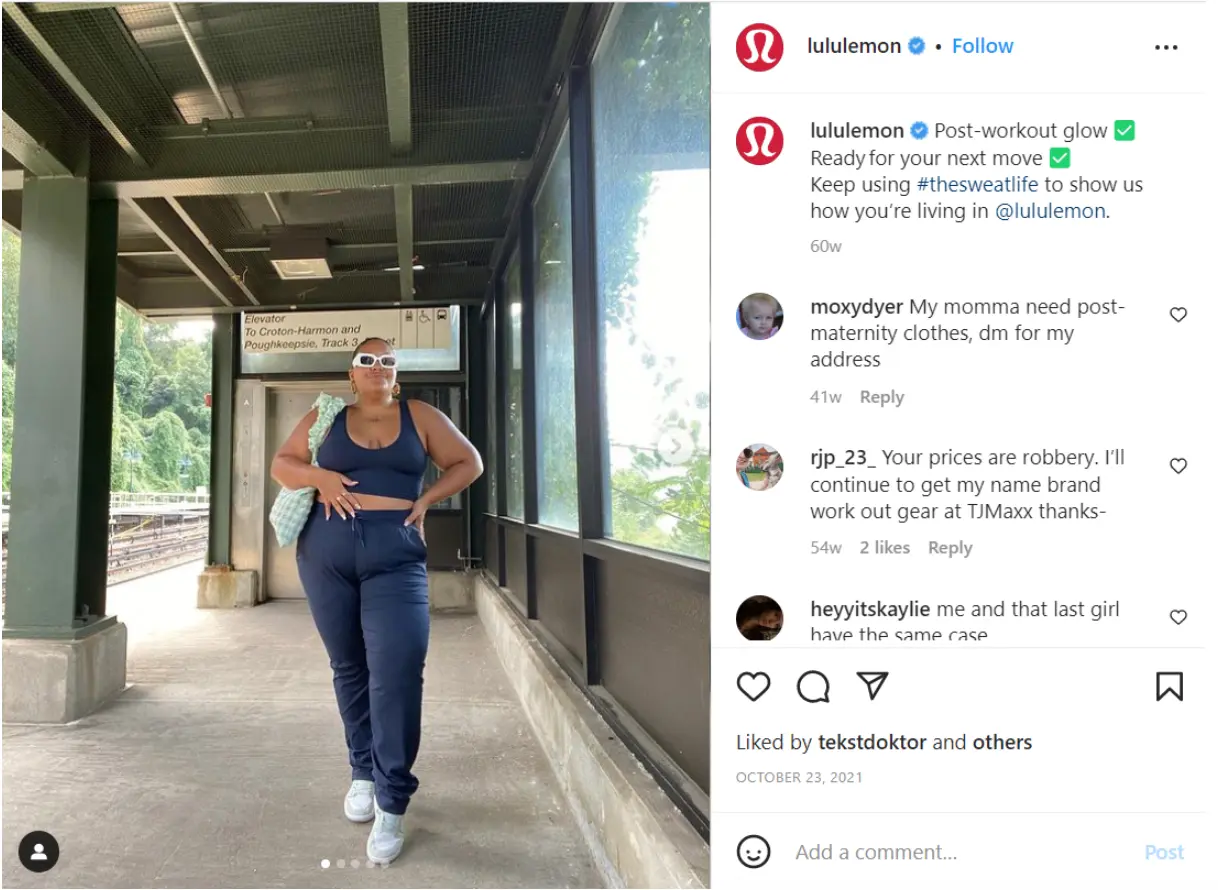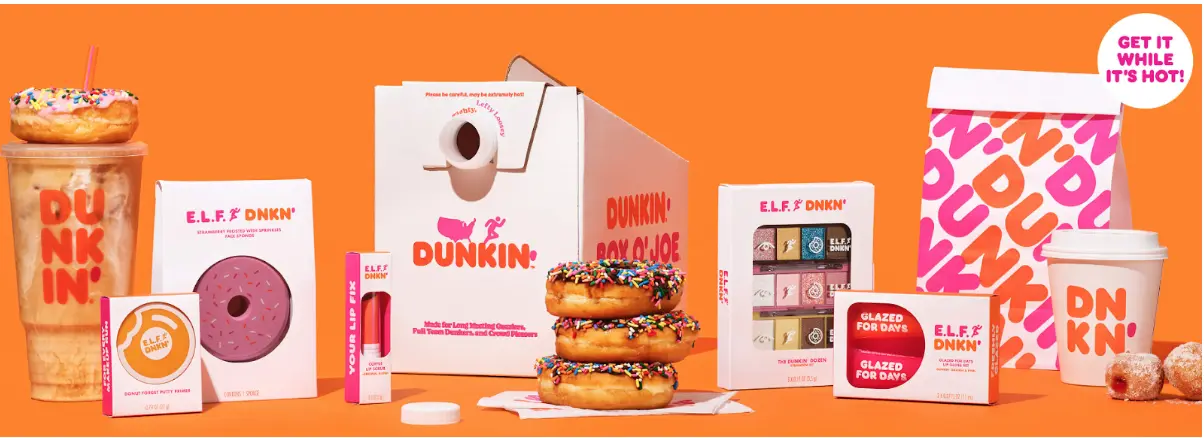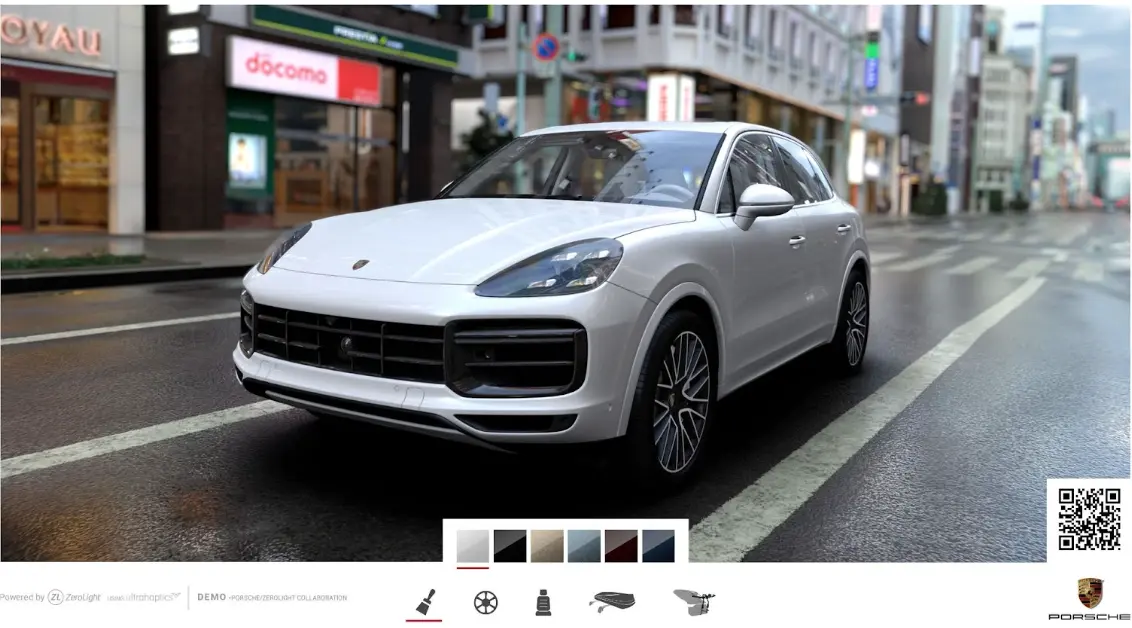Are you stuck in a rut, employing the same old marketing tactics repeatedly but not getting the results you want? You're not alone. Even the most successful marketers experience creative blocks from time to time.
But dwelling on what isn't working won't get you anywhere. So why not get out of your comfort zone and try something out of the ordinary?
6 Unique Marketing Strategies for Small Business
- Leverage User-Generated Content
- Take Advantage of QR Codes
- Watch Your Competitor's Social Media
- Make Your Website Content More Interactive
- Get Involved in Brand Collabs
- Make the Most of Events & Holidays
Here are some out-of-the-way marketing tactics to try for your small business.
1. Leverage User-Generated Content
No one likes to be directly told what to buy. But what if instead of blatant self-promotion, you had real people singing your praises? That's where user-generated content (UGC) comes in.
UGC is the quality content your customers and fans author to showcase their love of your brand. With it, you can harness the power of word-of-mouth marketing and allow real customers to tell stories about their experiences with your brand.
This type of user-generated content is incredibly persuasive because it lends an air of authenticity to your products or services. Case in point: LuluLemon's #thesweatlife hashtag campaign.

The Canadian athleisure brand's #thesweatlife campaign encouraged fans to share photos of themselves wearing their LuluLemon clothes.
It resulted in an avalanche of user-generated content, with over 800,000 posts featuring the hashtag, bolstering the brand's authority and reputation.
You can use similar tactics to encourage your customers to create quality content that speaks to their experiences with your brand. You can even provide incentives such as discounts and freebies to sweeten the deal.
-
How To Implement a UGC Strategy
If you want to tap into the power of UGC, here are a few tips you should follow:
- Develop an actionable hashtag. Make your hashtag unique, easy to remember, and relevant to your brand. For example, if you're a clothing company, consider something like "#ShowUsYourStyle."
- Offer incentives. When jumpstarting your UGC campaign, incentivize your customers with discounts and other promotions.
- Showcase the content. Be sure to showcase any user-generated content across your social media channels. It’ll help increase engagement and show your followers that you're listening and responding.
- Analyze results. Keep a tight grip on your UGC campaigns. Track how many posts you're receiving, and analyze your followers. It’ll result in more creative and effective campaigns.
UGC can prove to be one of the most powerful tools in a small business's marketing arsenal. It’s been proven over and over again throughout this year to be one of the best brand activations approach you can take to raise awareness for your brand.
Apart from being cost-effective and authentic, it can also help you build a stronger rapport with your customers and create opportunities to interact with them.
2. Take Advantage of QR Codes
We know what you're thinking: how is a QR code anything but ordinary?
QR codes have moved beyond their traditional use of connecting people to a website or coupon code. Businesses are now using them to do all kinds of creative things.
For example, at the 2018 Digital Signage Expo, Porsche combined QR codes with augmented reality to debut a unique interactive experience.
Attendees could interact with the 2019 Porsche Cayenne Turbo model through haptic cues. All they had to do was scan the QR code.
Of course, this example may be out of reach for the average small business, but you can still use QR codes to give your customers a unique shopping experience.
You could use them to show video tutorials about using your product or add an interactive element to your store display. These might be smaller-scale experiences, but they still pack a powerful punch when engaging your customers.
-
How to implement a QR code strategy
Here are the steps on how to create a QR code based experience for your small business:
- Choose a QR code generator. You'll find a wide range of free QR code generators available online.
- Decide the type of experience you want to provide. The possibilities are endless. From adding audio tours to your products to creating virtual scavenger hunts for visitors, you can get creative with your codes.
- Design your QR code. Customize your code's size, shape, and color to make it stand out.
- Generate your code. Once you're happy with the design, generate the code and start testing it to check that it works properly.
And voila! You're ready to give your customers a unique experience with QR codes. You can add an extra dimension of engagement and interest to your business.
3. Watch Your Competitors' Social Media
Competition is the lifeblood of business. And staying ahead of your rivals requires some detective work. Social media is a fantastic tool for gathering intel on your competitors. You can then use this information to create better, more effective strategies.
For example, let's say you're launching a new product. You could use social media to gain insight into what similar products your competitors have released and how those campaigns have performed. You could also identify what content resonates with their target audience and learn about overall consumer trends.
But don't just stick to the big players in your industry. Keep an eye out for any new startups emerging as potential disruptors. You never know when a small up-and-coming company may end up cutting away at your market share.
-
How to implement a competitor strategy
Getting started with competitor research on social media is easy. You'll need to:
- Identify the competitors you want to monitor. You can use native social media analytics or specialized software to track relevant companies.
- Research their content. Take a deep dive into your rivals' posts and see what kind of engagement each receives. Pay particular attention to their most successful posts, providing clues as to what content resonates with the audience.
- Monitor their activity. Create alerts to notify you when they post new content, launch a campaign or make any other dramatic move. Alternatively, you can use a social listening or monitoring tool to do the grunt work for you.
- Organize and analyze the data. The key to successful competitive intelligence gathering is staying organized. Create a spreadsheet or use a reputable task management app like Monday or Wrike to document your findings. These can help you form a clear picture of your competition's activities and devise a strategy to outdo them.
Social, competitive intelligence will help you stay one step ahead of your competitors. So you can swoop in with a killer campaign and secure your place above the competition.
4. Make Your Website Content More Interactive
Content is king, but a string of words or a text block can hardly make an impression these days. To draw in readers and keep them coming back for more, you need to make your content more dynamic, and that's where interactive content comes in.
Many companies think of interactive content as a mere frill — little more than flashy gimmicks — to get someone to pause for a moment.
That couldn't be further from the truth. Interactive content involves actively guiding visitors through your brand's message and ensuring they receive its full impact.
A well-designed interactive piece conveys your brand's fervency through a narrative beyond text-heavy web pages. Take this blog post from Paperbell as an example.
The article focuses on pricing high-end coaching services. Now, the topic of pricing services can be tedious. But Paperbell spiced it up by adding process infographics in between the text.
Not only does this break up the monotony of a wall of words, but it also explains the material more visually.
-
How to implement a content strategy
If you're looking to make your content more interactive, here are some tips to steer you in the right direction:
- Utilize multimedia. Try adding audio and video clips to enhance your content. This upgrade will give it a more modern multimedia feel.
- Repurpose existing content. Give your existing content a facelift by turning it into something interactive. For example, you can turn a case study into a quiz or an ebook into an online course.
- Put your imagination to work. Interactive content isn't limited to run-of-the-mill options. Put your vision to work and design truly unique and captivating pieces.
With the right interactive element, you can inject life into otherwise dull content and give it the makeover it deserves. You can use a quiz builder or survey maker tool to create amazing interactive content and boost engagement.
5. Get Involved in Brand Collabs
We often get so caught up in promoting our brand alone that we need to remember the potential of collaborations.
Brand collaborations are a great way to bring together different businesses or personalities to create something extraordinary — and get more eyes on your product or service.
For example, you could work with a complementary brand to create a unique product or offer an exclusive promotion.
Like a fashion and beauty company coming together to create an entire makeup series or two eateries joining forces for a signature dish.
If you want to avoid collaborating with a competing brand, you could also go for brands in different industries, such as a tech company and a lifestyle brand, just like Dunkin Donuts and e.l.f. Cosmetics are coming together to create a coffee-inspired limited-edition makeup line.

You can also collaborate with influencers and leverage their reach. Work out a partnership where they can showcase your product or service to their followers and offer them something in return.
The possibilities are endless.
-
How to implement a brand collab strategy
Partnerships and collaborations help you to crack into new markets or leverage existing ones. But even the most successful brand collaborations take meticulous planning, so be sure to follow these basic steps:
- Identify potential partners. Make a list of brands, influencers, and other partners who could be a good fit for collaboration.
- Reach out and make your pitch. After you've compiled a list of possible partners, reach out to them and make your pitch.
- Negotiate and agree on terms. After discussing your ideas, negotiate a fair deal for both parties and finalize.
- Create and launch. Create something new together and offer it to your combined audiences.
Now all you're left to do is promote the collaboration and stretch it as far as possible. And if all goes well, you should see a nice boost in brand visibility, engagement, and sales.
6. Make the Most of Holidays and Events
For business looking to streamline their event organization efforts, keeping up with the latest event management technology is key.
Effective event planning can greatly enhance the attendee experience and improve overall event success.
This year, don't miss our curated list of the Top Ten Event Management Apps for 2024, specially designed to enhance your marketing strategies and attendee engagement.
We can't overlook the importance of event invitation cards; they play a crucial role in engaging attendees. Using an invitation maker app allows you to design unique and attractive invitations tailored to your event's theme, ensuring your invites capture attention and drive excitement.
Events and holidays trigger a surge in buying activity, making them the ideal time to capitalize on new sales. But you can't just jump on any holiday or event — you need to identify the ones relevant to your brand.
For example, Valentine's Day is a great event to target if you sell luxury candles. You could create content around self-care, share romantic gift ideas, or even host giveaways for couples.
Likewise, for a fashion brand, Black Friday would be an excellent time for a sales push. Push posts and ads highlighting your discounts and offers to get customers to shop.
You can also consider relevant cultural events like the Super Bowl or the Oscars. If you're creative, you can create campaigns that tie into these events and get people talking about your brand.
This strategy will help you reach a wider audience, boost visibility and engagement, and create more opportunities for sales.
How to implement a holiday strategy in 3 steps
- Identify relevant events and holidays. Make a list of events and holidays pertinent to your market and industry. If you're stuck, you'll find plenty of social media holiday calendars online. You'll also find lesser-known but equally important social media holidays.
- Come up with content to match. Once you've identified the events and social media holidays that apply to your brand, create content that ties into them. Include social media posts, videos, and audience engagement tools to keep your audience engaged and interested in your content.
- Design your strategy. Map your campaigns, deadlines, and channels. Make sure your timing is on point. Events and holidays have peak times for engagement, so time your content accordingly.
Following these tips will help to ensure that your brand is taking full advantage of the buying activity that most holidays and events bring. But if you're new to this strategy, make sure you start small.
Then, measure your results, and use the data to refine your approach. You’ll manage social media activities better and maximize your results in the long run.
Get Creative with Your Marketing
Sticking with the same old methods of marketing can get stale fast. Many of them are not as effective anymore. That's why it pays to think outside the box and discover new and inventive ways to promote your product or service with inventive, quality content.
By trying new and unconventional marketing tactics, you can shake up your routine and breathe life into your campaigns. So exercise your creative muscles and get to work!




